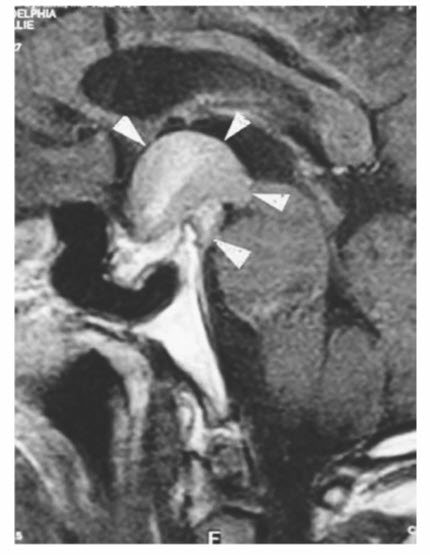Question 10#
A 35-year-old mother of two children, 5 and 6 years, has had amenorrhea and galactorrhea for the past 12 months. Her serum prolactin level is elevated, and radiographs of her skull show an "empty sella:' The most likely diagnosis is:
A. MenopauseB. Pregnancy
C. Pituitary tumor
D. Sheehan syndrome
Correct Answer is C
Comment:
Pituitary adenomas arise from the anterior pituitary gland (adenohypophysis). Tumors <1 cm diameter are considered microadenomas; larger tumors are macroadenomas. Pituitarytumors may be functional (ie, secrete endocrinologically active compounds at pathologic levels) or nonfunctional (ie, secrete nothing or inactive compounds). Functional tumors are often diagnosed when quite small, due to endocrine dysfunction. The most common endocrine syndromes are Cushing disease, due to adrenocorticotropic hormone secretion, Forbes-Albright syndrome, due to prolactin secretion, and acromegaly, due to growth hormone secretion. Nonfunctional tumors are typically diagnosed as larger lesions causing mass effects such as visual field deficits due to compression of the optic chiasm or panhypopituitarism due to compression of the gland. Figure below demonstrates a large pituitary adenoma. Hemorrhage into a pituitary tumor causes abrupt symptoms of headache, visual disturbance, decreased mental status, and endocrine dysfunction. This is known as pituitary apoplexy.

Postcontrast T1 -weighted sagittal magnetic resonance imaging (MRI) demonstrating a large sellar/suprasellar lesion (arrowheads) involving the third ventricle superiorly and abutting the midbrain and pons posteriorly. The patient presented with progressive visual field and acuity loss. Pathology and laboratory work revealed a nonfunctioning pituitary adenoma.